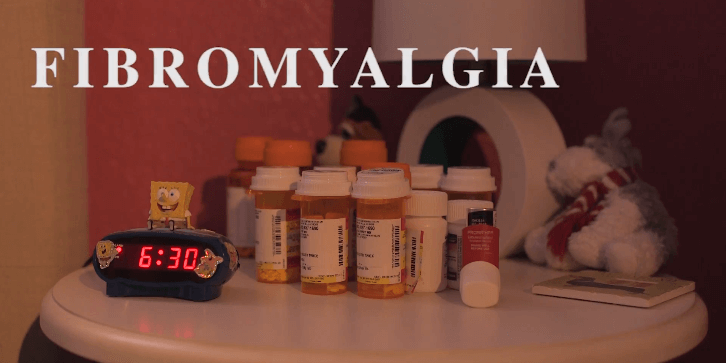Lyrica For Nerve Pain

There is no possible way to treat chronic pain without risk to the person experiencing it. Nearly all the medicinal therapies on the market today can offer some relief while also carrying with them some threat. This posting will be my critical appraisal of the use of Lyrica for nerve pain.
If you have never experienced neuropathic pain (pain that originates from a dysfunction of the nervous system somewhere) or never knew someone with it then you may not realize how difficult it is to treat (click here to see my post on a very mysterious type of neuropathic pain).
Finding medications that are effective for this type of pain has been very challenging for medical researchers. You see, neuropathic pain has an ability to change with time.
The nervous system is not a system of wires that is developed as a child and remains fixed. It is actually a system that is constantly changing and adapting to internal and external stimuli.
Imagine if your computer could adapt to the way you interacted with it. You might say, “It already does that.”
You can see how certain software programs adjust their prompts to you according to previous choices. That is not all our nervous system does though.
Our nervous system not only changes its function (like a reactive software program) but also changes its structure. Can you imagine a computer that could “rewire” itself or reconstruct the microchip processor in response to the way you use it?
That would give the change a type of permanence that I am talking about that occurs in the nervous system with neuropathic pain.
Because of this “adaptability” of the nervous system (called neuroplasticity), it is a “moving target” for medical researchers. It is very difficult to construct a scientific study on something that is constantly changing.
Furthermore, the stimuli that induce change in the nervous system are not only external but internal too.
The very thoughts that we have can affect our nervous system as if we performed the action in the physical (not just in our mind). So when a person imagines playing the piano their brain actually fires in the same electrical pattern as if they were physically playing the piano.
Do you have a better grasp of the magnitude of what I am taking about with neuropathic pain? It stands to reason that a medicine that treats neuropathic pain will affect not only the physical but also the mental aspects of pain.
What Is Lyrica?
Lyrica (trade name) or pregabalin (generic name) is a synthetic substance that was developed and marketed by the Pfizer drug company. It is the first medicine to be approved in the United States for its primary use to be in the treatment of neuropathic pain states. This occurred in 2004.
All other medicines that were used for neuropathic pain, before the development of Lyrica, were used to treat neuropathic pain with a hope that they might work. Lyrica was the first medicine developed that proved it is consistently effective for neuropathic pain.

It subsequently was approved for use by the FDA for neuropathic pain (the first medicine of its type).
How Does Lyrica Work?
The chemical structure of Lyrica closely resembles a naturally occurring chemical messenger substance found in the nervous system called GABA (gamma-amino butyric acid). GABA modulates pain by reducing the generation and transmission of pain signaling.
It is what is called an inhibitory neurotransmitter for pain.

When a person takes Lyrica the levels of GABA go up in the nervous system. This reduces the generation and transmission of pain.
This is the good part about this medication.
Unfortunately, Lyrica does not just effect pain nerve cells but other nerve cells too. The inhibitory effect on other areas of the nervous system “sets Lyrica up” to cause a wide range of side effects.
Furthermore, due to the highly individualized nature of the nervous system (every human being is so unique), the predictability of who will suffer major side effects from Lyrica is difficult.

What Is Lyrica Used For?
The use of Lyrica has been best applied in the following 3 circumstances:
1) In the treatment of neuropathic pain:
- Neuropathic pain caused by Diabetes Mellitus.
- Neuropathic pain caused by “Shingles” (click here to see my post on this subject).
- Neuropathic pain caused by spinal cord injury.
- Neuropathic pain caused by a host of other illnesses.
2) In the treatment of certain types of seizures.
3) In the treatment of Fibromyalgia.
It is very common for Doctors to use medications like Lyrica for “off label” indications. This means using it for disorders that may be helped with the medication but are not officially approved for use by the FDA.
Many common medications are used in this manner and it does not mean the Doctor is “experimenting.”
How Is Lyrica Dosed?
Lyrica is begun at a low starting dose, taken by mouth, and given 2 or 3 times per day. Each starting dose is different based on the disorder being treated, the size of the individual, and other body functions that are taken into account by the prescribing practitioner.
After the starting dose has been taken for several weeks (Lyrica does not relieve pain immediately like an opiate based medicine does), the person taking the medication is re-evaluated by the prescriber. A dose adjustment is made to improve pain relief and reduce side effects.

This process may go on for many weeks or months before an “optimal dose” is achieved. An “optimal dose” would be one which has a significant relief of pain with a minimum of side effects.
This process requires much patience on the part of a person who is already experiencing pain. Lyrica is not indicated for acute pain.
Often times other medications will need to be added in order that the person with pain can “hold out” until the Lyrica begins to work.
What Are The Side Effects of Lyrica?
Do you remember that I previously said that Lyrica works on many types of nerve cells? Because of this, there are many side effects that can be induced by Lyrica. The following table lists a few:
In addition to the numerous side effects of Lyrica, there are also over 604 different drugs that Lyrica interacts with. Of the 604 drugs, 27 of the drugs have 6 major different types of interactions.
The remainder of interactions are classified as “minor.”

Because of what has been said, every person taking Lyrica needs to be carefully evaluated for the potential side effects and drug interactions. Furthermore, the possibilities need to be discussed with the person before they take Lyrica.
Starting a person on Lyrica requires careful evaluation, thorough instructions, and close follow-up by a medical practitioner experienced in the use of this substance.
Are There Alternatives To Lyrica?
Though there are other medications for neuropathic pain, none have been as consistently effective as Lyrica. Here are a few over the counter alternatives:
- Alpha Lipoic Acid
- Omega-3-Fatty Acids
- Primrose Oil
- Acetyl-L-Carnitine
Notice that I have not given the doses or how to take these alternative medications. You will need to discuss beginning any new therapies with your medical practitioner.
Summary Remarks
We have discussed neuropathic pain, what Lyrica is, how it works, when to use it, dose, and possible side effects. Despite the long list of side effects and interactions, Lyrica can be used safely under the supervision of a medical practitioner.
Lyrica has shown miraculous reductions in neuropathic pain in some individuals. If you or a loved one are experiencing neuropathic pain, Lyrica offers some real hope.
This is important !
THIS POSTING IS NOT INTENDED TO REPLACE A THOROUGH HISTORY, PHYSICAL, DIAGNOSTIC WORK-UP, AND SUPERVISION BY A LICENSED MEDICAL PRACTITIONER.
I trust this article has been informative and helpful. Please leave me a comment or question in the box below.
Wishing you joy and good health.





